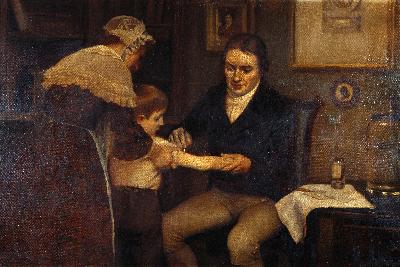Box of oral polio vaccine
Production date
1964-1966
See full details
Details
Description
Held by the Science Museum
Copyright: The Board of Trustees of the Science Museum
Copyright: The Board of Trustees of the Science Museum
History
Poliomyelitis (polio) was most active from the late-19th to the mid-20th centuries, with major epidemics in Europe and the United States. Most cases of polio show no or mild symptoms, but for those who develop muscle weakness and paralysis, the effects can be devastating or even fatal.
A breakthrough came in 1952 when Dr Jonas Salk (1914–1995) began to create the first effective vaccine against polio. In 1961, Albert Sabin (1906–1993) pioneered the more easily administered oral polio vaccine. Mass vaccination programmes followed, and cases of polio have become rare over time. Today, polio cases remain only in Pakistan and Afghanistan.
What is poliomyelitis?
Poliomyelitis, commonly known as polio or infantile paralysis, is an infectious disease that largely affects young children.
The black and white photograph shows a patient in an iron lung machine in 1930. People infected with polio, unable to breathe on their own, had to rely on an iron lung respirator. Thanks to the development of an effective polio vaccine, very few iron lungs are in use today.
How is the Red Cross helping to eradicate polio?
The British Red Cross helps raise awareness around diseases as part of its work overseas. For example, in Sierra Leone, Red Cross health campaigns ensure children are immunised against diseases such as polio.
B/W photograph copyright: Wellcome Collection
A breakthrough came in 1952 when Dr Jonas Salk (1914–1995) began to create the first effective vaccine against polio. In 1961, Albert Sabin (1906–1993) pioneered the more easily administered oral polio vaccine. Mass vaccination programmes followed, and cases of polio have become rare over time. Today, polio cases remain only in Pakistan and Afghanistan.
What is poliomyelitis?
Poliomyelitis, commonly known as polio or infantile paralysis, is an infectious disease that largely affects young children.
The black and white photograph shows a patient in an iron lung machine in 1930. People infected with polio, unable to breathe on their own, had to rely on an iron lung respirator. Thanks to the development of an effective polio vaccine, very few iron lungs are in use today.
How is the Red Cross helping to eradicate polio?
The British Red Cross helps raise awareness around diseases as part of its work overseas. For example, in Sierra Leone, Red Cross health campaigns ensure children are immunised against diseases such as polio.
B/W photograph copyright: Wellcome Collection
Catalogue Number
150.42
Subject auto tags
Object Types
Part of 1 highlight set
Share
All images are the property of the British Red Cross Museum and Archives (unless otherwise indicated), and cannot be used without permission. For queries about permission to use images, please contact enquiry@redcross.org.uk.


